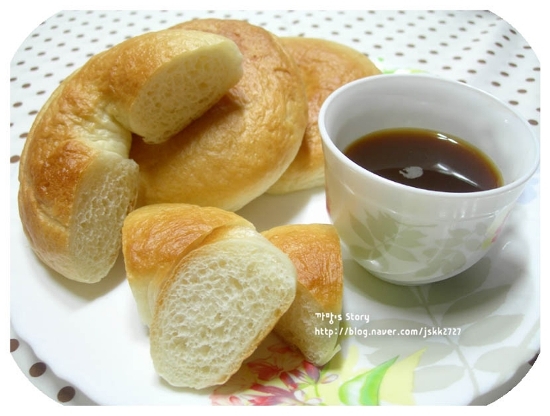
Plain bagel
It's a light and chewy bagel.
6 serving
Within 90 minutes

까망이
- Ingredients
-
-
Strong flour375g
-
olive oil1.5TS
-
Water225g
-
Instant Dryist5g
-
Water
-
Sugar1/2TS
-
baking soda1ts
-
Sugar15g
-
Salt6g
-
- Cooking Steps
-
STEP 1/4Put the ingredients except olive oil into the baking machine and knead them. When the dough is smooth, add olive oil and knead. First ferment in a warm place (35-45) for 30-40 minutes. Divide the dough without gas into 8 pieces and make a circle. Cover with plastic and rest at room temperature for about 20 minutes.
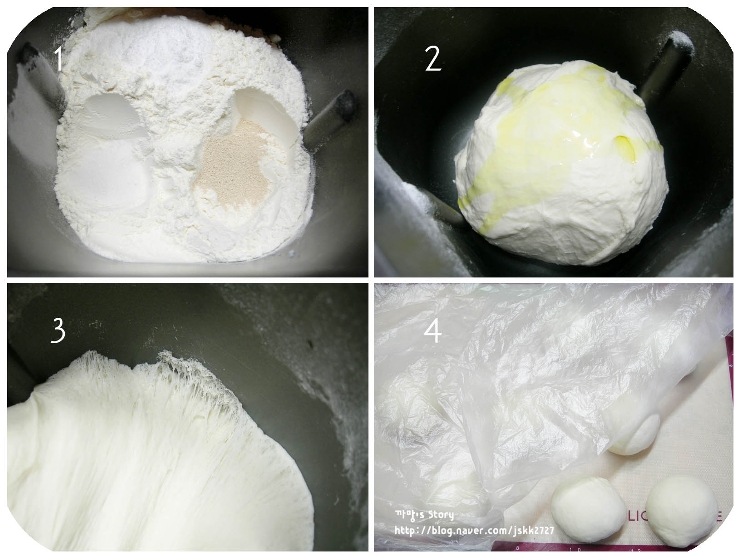 STEP 2/4Roll out the dough with a rolling pin. Roll the dough from the bottom. When rolled, roll it into a long rod shape. Pinch the dough tightly so that it doesn't burst. Make sure to pinch the sides, too. Otherwise, I might burst my sides while baking while fermenting. Glue the dough into a ring shape. As expected, pinch it tightly so that it doesn't unravel.
STEP 2/4Roll out the dough with a rolling pin. Roll the dough from the bottom. When rolled, roll it into a long rod shape. Pinch the dough tightly so that it doesn't burst. Make sure to pinch the sides, too. Otherwise, I might burst my sides while baking while fermenting. Glue the dough into a ring shape. As expected, pinch it tightly so that it doesn't unravel.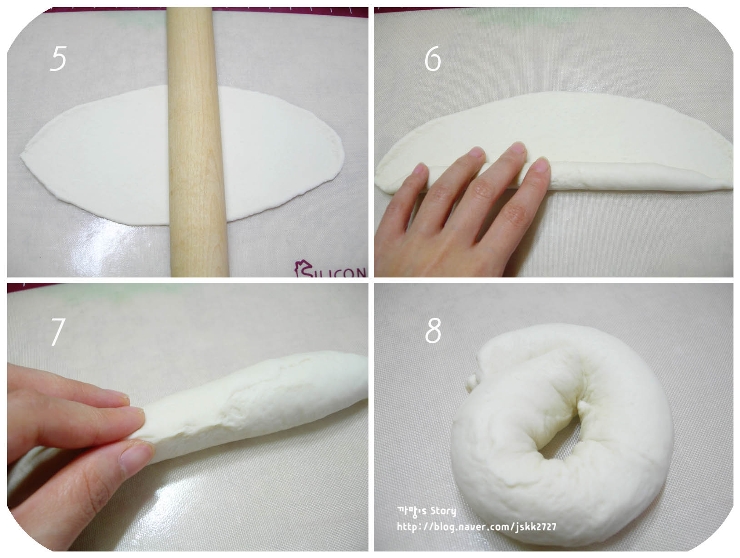 STEP 3/4Cut the paper foil into appropriate sizes and place the ring-shaped dough on top. Before panning the dough, stretch it as much as possible to make the ring larger. The hole gets smaller and smaller during the baking process. Perform secondary fermentation for about 30 minutes in a warm place (35-45). Bring the water to a boil and prepare for the end of fermentation.
STEP 3/4Cut the paper foil into appropriate sizes and place the ring-shaped dough on top. Before panning the dough, stretch it as much as possible to make the ring larger. The hole gets smaller and smaller during the baking process. Perform secondary fermentation for about 30 minutes in a warm place (35-45). Bring the water to a boil and prepare for the end of fermentation.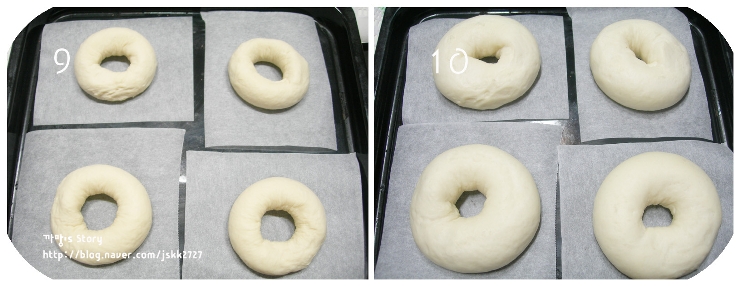 STEP 4/4After fermentation, put 1/2 tablespoon sugar and 1 teaspoon baking soda in boiling water and blanch them for 30 seconds. You don't have to force the paper foil off. Blanch paper foil in a pot. Turn the porridge upside down and blanch the back side for 30 seconds. Remove the well-boiled dough by shaking off the water for 30 seconds at the front and back. Bake the panning dough at 190 for 15-18 minutes. If the heat on the top is too strong and the color comes out early, please cover it with aluminum foil to prevent the color from getting darker.
STEP 4/4After fermentation, put 1/2 tablespoon sugar and 1 teaspoon baking soda in boiling water and blanch them for 30 seconds. You don't have to force the paper foil off. Blanch paper foil in a pot. Turn the porridge upside down and blanch the back side for 30 seconds. Remove the well-boiled dough by shaking off the water for 30 seconds at the front and back. Bake the panning dough at 190 for 15-18 minutes. If the heat on the top is too strong and the color comes out early, please cover it with aluminum foil to prevent the color from getting darker.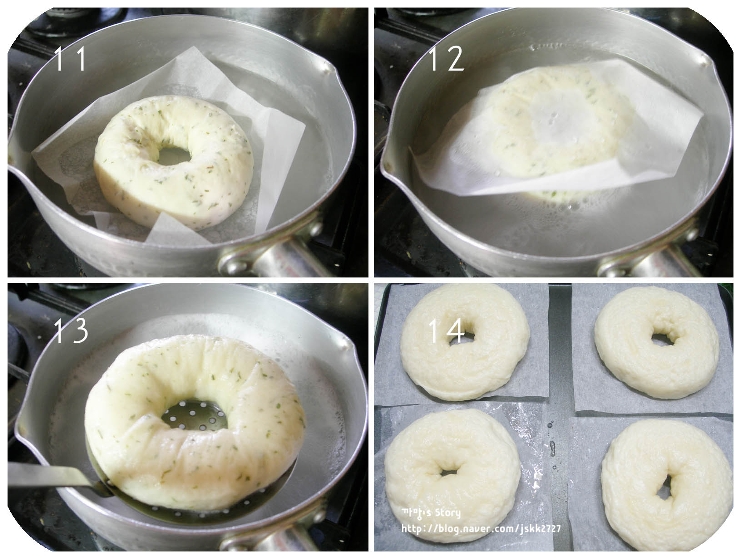
- Kimchi Recommended recipe
-
-
1
 I'm done worrying about side dishes.4.91(46)
I'm done worrying about side dishes.4.91(46) -
2
 The recipe is simple and the taste is excellent4.96(248)
The recipe is simple and the taste is excellent4.96(248) -
3
 Short soup with young radish kimchi4.98(41)
Short soup with young radish kimchi4.98(41) -
4
 Rice thief popular side dish perilla leaf kimchi golden recipe4.96(130)
Rice thief popular side dish perilla leaf kimchi golden recipe4.96(130)
-
- Bulgogi Recommended recipe
-
-
1
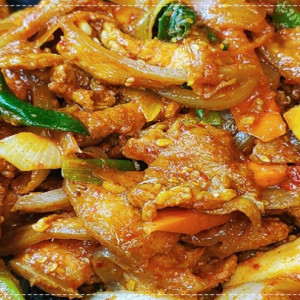 Making pork and red pepper paste bulgogi delicious and simple4.87(23)
Making pork and red pepper paste bulgogi delicious and simple4.87(23) -
2
 You know the famous dish, right! Bulgogi with bean sprouts4.93(44)
You know the famous dish, right! Bulgogi with bean sprouts4.93(44) -
3
 How to make beef bulgogi golden recipe without failure4.97(89)
How to make beef bulgogi golden recipe without failure4.97(89) -
4
 Seasonal Jusam Bulgogi4.98(41)
Seasonal Jusam Bulgogi4.98(41)
-